What was the aftermath of the Second World War? History shows that after the surrender of the Axis Powers, the Americans invaded and occupied Japan which was barely standing. Meanwhile, Germany was divided by the Allies (France, Britain, United States, and Soviet Russia).
In 1933, when Germany was still suffering and reeling from the First World War, Hitler said, “Give me ten years and you will not be able to recognize Germany!” His words came true, but not according to the changes he had in mind. In 1945, Germany was barely recognizable because it was completely destroyed. Even countries such as Poland, Russia, Ukraine, Japan, and others suffered great casualties and damages. The war ravaged many cities, factories, ports, bridges, railroads, farms, houses, and even the lives of many people. Millions of people became refugees of war. Amidst these wreckage, diseases and hunger continued for many years. The forewarning of our Lord Jesus Christ had been fulfilled, there would be famines and earthquakes in various places!
On January 12, 1945, an earthquake struck Mikawa, Japan — nine months prior to their surrender — where 1,961 people died. More than 17,000 houses were destroyed. Ten months later, an earthquake struck Makran Coast, Pakistan and 4,000 people died. A powerful tsunami caused significant damage to Karachi, as well as in Mumbai (Bombay), India.
Even as the Allies celebrated victory, the appalling costs of the war began to emerge.The war had killed as many as 75 million people around the world. In Europe, about 38 million people lost their lives, many of them civilians. The Soviet Union suffered the worst casualties with more than 22 million dead.
Amid the rubble of war, a new power structures emerged. In Europe, Germany was defeated. The old empires, France and Britain, were drained and exhausted. Two “new” powers, the United States and the Soviet Union, had brought forth the final victory. Before long, these two nations would become superpowers with the economic resources and military might to dominate the globe.
During the war, the Soviet Union and the nations of the West had cooperated to defeat Nazi Germany. By 1945, however, the wartime alliance was crumbling. Conflicting ideologies and mutual distrust soon led to the conflict known as the Cold War. The Cold War was a state of tension and hostility among nations, without armed conflict or a declaration of war between the major rivals. At first, the focus of the Cold War was Eastern Europe, where Stalin and the Western Powers had very different goals.
While these events were taking place, an earthquake struck Ustukran, Turkey on May 31, 1946, killing 2,140 people. And on November 10, 1946, an earthquake in Lima, Peru killed 1,400 people. Just over a month later, another earthquake struck in Nankaido, Japan on December 20, 1946, and 1,362 people died.
Let’s find out, what events led the Allies to the Cold War? Stalin had two goals in Eastern Europe. First, he wanted to spread communism in the area. Second, he wanted to create a buffer zone of friendly governments as a defense against Germany, who invaded Russia during the First and the Second World War.
When the Red Army (Soviet Union) pushed the German forces out of Eastern Europe, Stalin’s forces occupied the Nazi’s territories. During wartime conferences, Stalin tried to persuade the Allies to accept Soviet influence in Eastern Europe. He further declared that:
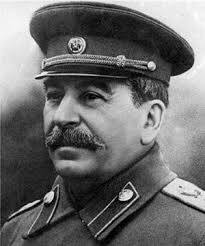
“Whoever occupies a territory also imposes his own social system. Everyone imposes his own system as far as his armies can reach. It cannot be otherwise.”
Stalin pointed out that the United States did not even consult them about the peace terms for Italy and Japan, which were defeated and occupied by British and American troops. In the same way, the Soviet Union would determine the fate of the Eastern European lands occupied by the Red Army on their way to Berlin.
Roosevelt and Churchill rejected Stalin’s view, and made him promise “free elections” in Eastern Europe. Stalin ignored them. Backed by the Red Army, the local communists in Poland, Czechoslovakia, and other countries destroyed their rival political parties and even assassinated democratic leaders. By 1948, Stalin had installed pro-Soviet communist governments throughout Eastern Europe.
Churchill had long distrusted Stalin. As early as 1946, during a visit to the United States, he described Soviet Union’s control over Eastern Europe as an “iron curtain” dividing the continent. He further stated that:
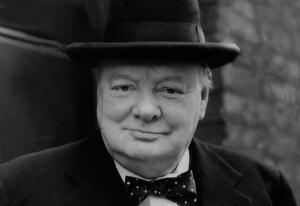
“A shadow has fallen upon the scenes so lately lighted by the Allied victories… From Stettin in the Baltic to Trieste in the Adriatic, an iron curtain has descended across the Continent. Warsaw, Berlin, Prague, Vienna, Budapest, Belgrade, Bucharest, and Sofia, all these famous cities and populations; around them lie in what I must call the Soviet sphere and all are subject to a very high and, in many cases, increasing measure of control from Moscow.”
In the West, the “iron curtain” became a symbol of the Cold War. It expressed the growing fear of communism. More importantly, it described the division of Europe into eastern and western blocs. In the East, were the Soviet-dominated communist countries. In the West, were the western democratic countries led by the United States.
Like Churchill, President Truman of United States saw communism as an evil force creeping across Europe and threatening countries around the world, including China. To deal with that threat, the United States abandoned its traditional isolationism. It had withdrawn from global affairs after World War I; but after World War II, the nation took a leading role on globalization.
In Greece, Stalin backed communist rebels who were fighting to overturn a right-wing monarchy supported by Britain. By 1947, however, Britain could no longer afford to defend Greece. Stalin was also menacing Turkey in the Dardanelles, he wanted (to seize) control in the strait linking the Russian Black Sea coasts and the Mediterranean.
So, on March 12, 1947, Truman took action, outlining a new policy to the Congress, saying:
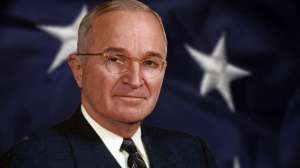
“I believe that it must be the policy of the Unites States to support free people who are resisting attempted subjugation by armed minorities or by outside pressures… The free peoples of the world look to us for support in maintaining their freedoms.”
This policy known as the Truman Doctrine, would guide the United States for decades to come. It made clear that Americans would resist Soviet expansion in Europe or elsewhere in the world. Truman soon sent military and economic aid and advisers to Greece and Turkey so that they could withstand the threat of communism.
The Truman Doctrine was rooted in the idea of containment to limit communism to the areas already under Soviet control. George Kennan, the American statesman who first proposed this approach, believed that communism would eventually destroy itself. He said:
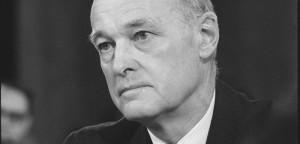
“With patient, but firm and vigilant containment, the United States could stop Soviet expansion.”
Stalin, however, saw containment as “encirclement” by the capitalist world that wanted to isolate the Soviet Union.
After the war, hunger and poverty made Western European lands a fertile ground for communist ideas. People were keen to the idea of equal distribution of resources, abolishing the societal hierarchy of rich and poor. To strengthen democratic governments, the United States offered massive aid package, called the Marshall Plan. Under the plan, the United States funneled food and economic assistance to Europe to help countries ravaged by the war to rebuild themselves. American aid worth in billions helped war-shattered Europe to recover rapidly.
Germany became another focus of the Cold War. Fearing the danger of a restored Germany, the Soviet Union seized factories and other resources in its occupation zone and used them to help rebuild Russia. France, Britain, and the United States, however, decided to unite their zones of occupation, encouraging Germans to rebuild businesses and industries.
Germany thus became a divided nation. In West Germany, the democratic nations allowed the people to write their own constitution and regain self-government. In East Germany, the Soviet Union installed a communist government tied to Moscow.
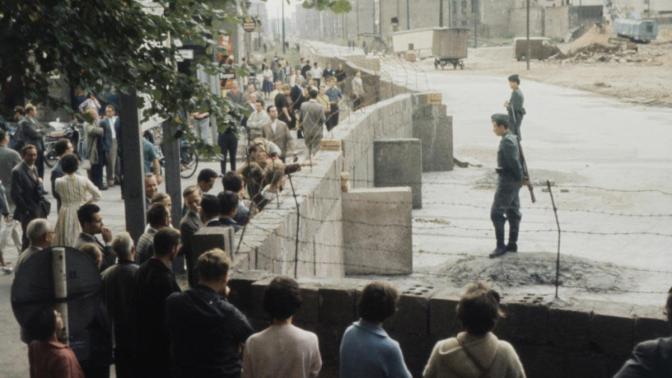
Stalin’s resentment at the Allies’ action to rebuild Germany as a democracy triggered a crisis over Berlin. The former German capital was occupied by all four victorious Allies, even though it lay deep within the Soviet zone.
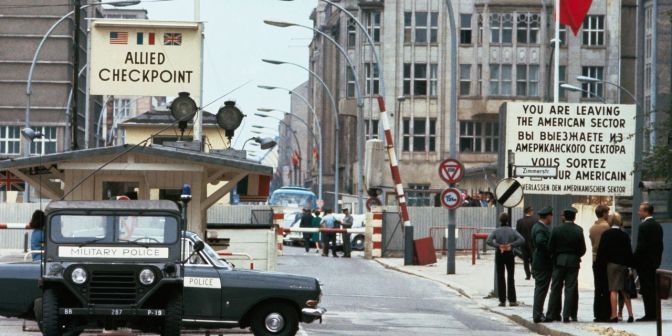
In 1948, Stalin tried to force the western Allies out of Berlin by sealing off every railroad and highway into the western sectors of the city. The western powers responded to the blockade by mounting a round-the-clock airlift. For two years, cargo planes supplied West Berliners with food and fuel. Their success forced the Soviets to end the blockade. Although the democratic West had won the Cold War, the crisis deepened their hostilities.
While such events took place in Berlin, an earthquake shook Fukui, Japan, on June 28, 1948, and killed 3,769 people. Just over three months later, a massive earthquake in Ashgabat, Turkmenistan (USSR), killed around 110,000 people.
Tensions continued to grow between the two new superpowers. In 1949, the United States, Canada, and nine Western European countries formed a new military alliance called the North Atlantic Treaty Organization (NATO). Members pledged to help one another if any of them was attacked.
In the same year (July 10, 1949) an earthquake in Khait, Tajikistan, USSR killed 12,000 people. In less than a month (August 5, 1949), an earthquake in Ambato, Ecuador killed 5,000 people. On August 15, 1950, an earthquake struck Zhamo, Xizang, China (Tibet) and 1,526 people perished. And on August 2, 1951, an earthquake in the Cosiguina, Nicaragua killed 1,000 people. Then on March 18, 1953, an earthquake struck in Yenice-Gonen, Turkey and 1,070 died. It was followed by another earthquake on September 9, 1954, in Orleanville, El Asnam (Algeria), where 1,250 died.
As time passed, tensions in the Cold War rise between the US and the Soviet Union. And in 1955, the Soviet Union responded by forming its own military alliance, the Warsaw Pact. It included the Soviet Union (USSR) and seven satellites in Eastern Europe. Unlike NATO, the Warsaw Pact was a weapon used by the Soviets to keep its satellites in order.
Each side in the Cold War armed itself to withstand an attack by the other. At first, the United States held an advantage with an atomic bomb arsenal. But Stalin’s top scientists were under orders to develop an atomic bomb of their own. They succeeded in 1949, and then the arms race began. For four decades, the two superpowers spent huge amounts of money to develop nuclear and state-of-the-art weaponry. They invested more to improve bombers, missiles, and submarines to launch these weapons of mass destruction. Churchill said:
“Soon, the global balance of power became a balance of terror!”
Looking back in 1945, the whole world had hoped that after decades of economic crisis, tyranny, and cruel wars, global hostilities would end. Instead, they faced a more dreadful and terrifying future!
As the arms race of the two superpowers continued, an earthquake struck near Sang Chai, Mazandaran, Iran on July 2, 1957 and killed 1,200 people. In the same year (December 13, 1957) an earthquake shook Sahneh, Iran and 1,130 people died. And on February 29, 1960, an earthquake struck in Agadir, Morocco, leaving 12,000 people dead. And about three months later (May 22, 1960) another earthquake struck Temuco, Valdivia, Chile, where 1,655 people died. After more than two years (September 1, 1962) a terrible earthquake in Bu’in Zahra, Qazvin, Iran left 12,255 people dead. Then on July 26, 1963, an earthquake in Skopje, (former Yugoslav) and killed 1,100.
When US President Nixon took office, he began to implement a new approach to international relations and took a more diplomatic approach. He adopted a policy called the “detente” or a relaxation towards the Soviet Union. But despite his efforts, the Cold War heated up again when Ronald Reagan was elected president.
As Reagan fought communists in Central America, the Soviet Union was disintegrating. They suffered severe economic problems and growing political ferments. Mikhail Gorbachev, who succeeded Stalin as the Soviet leader, redefined their country’s relationship to the whole world. He introduced new policies. Glasnost (political openness) and Perestroika (economic reforms).
The Soviet influence waned and every other communist state replaced its government to a non-communist one. By 1991, the Soviet Union separated into 15 nations and the Cold War ended.
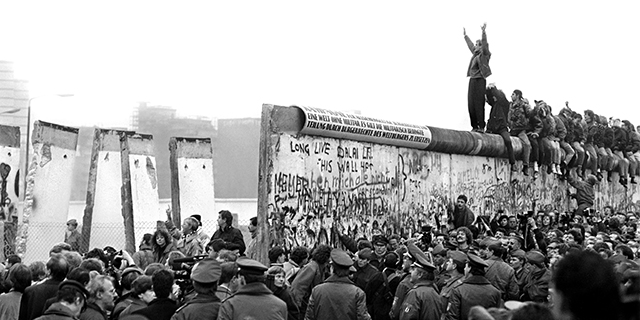
For over 40 years, the principles of the two rival countries were clear: the Soviet hegemony and Communist ideology stood as the antithesis to Western capitalist thinking. The conflict between these two powerful nations not only divided all of Europe, but it also aggravated crises in the whole world! The reason, the funding and resources of these two superpowers was exhausted and depleted. Though it did not lead to a global conflict, there were occasional wars in small countries because of them. They made businesses out of the poor people in smaller countries.
The threat of the destructive power of nuclear war heads loomed as a specter that threatens the destruction of the world. Its power is equivalent to all the bombs detonated in the First and Second World Wars. It is truly horrifying! Even before the Cold War ended between the US and the Soviet Union, both of them had already accumulated around 48,000 nuclear war heads! Up to the present, how much more are stored in China, North and South Korea, Japan, Iran, Britain, France, and many other countries? With the growing number of these destructive weapons, the whole world will be completely annihilated!
Let us refer back to the book of Revelation. What else will occur in the blowing of the sixth trumpet?
Revelation 9:19-20 NASB
“For the power of the horses is in their mouths and in their tails; for their tails are like serpents and have heads, and with them they do harm. And the rest of mankind, who were not killed by these plagues, did not repent of the works of their hands, so as not to worship demons, and the idols of gold and of silver and of brass and of stone and of wood, which can neither see nor hear nor walk;“
The Second World War is over, but the series of events in the blowing of the sixth trumpet that includes the second woe is not yet over. It is evident that people would not repent from worshiping false gods, an act which is despised by God.
What follows next is the Bible’s forewarning of the forthcoming “perilous times” and the state of people’s virtues in these last days. Idolatry of the heart and of the stomach will also prevail, things we’ve been witnessing during these times.






